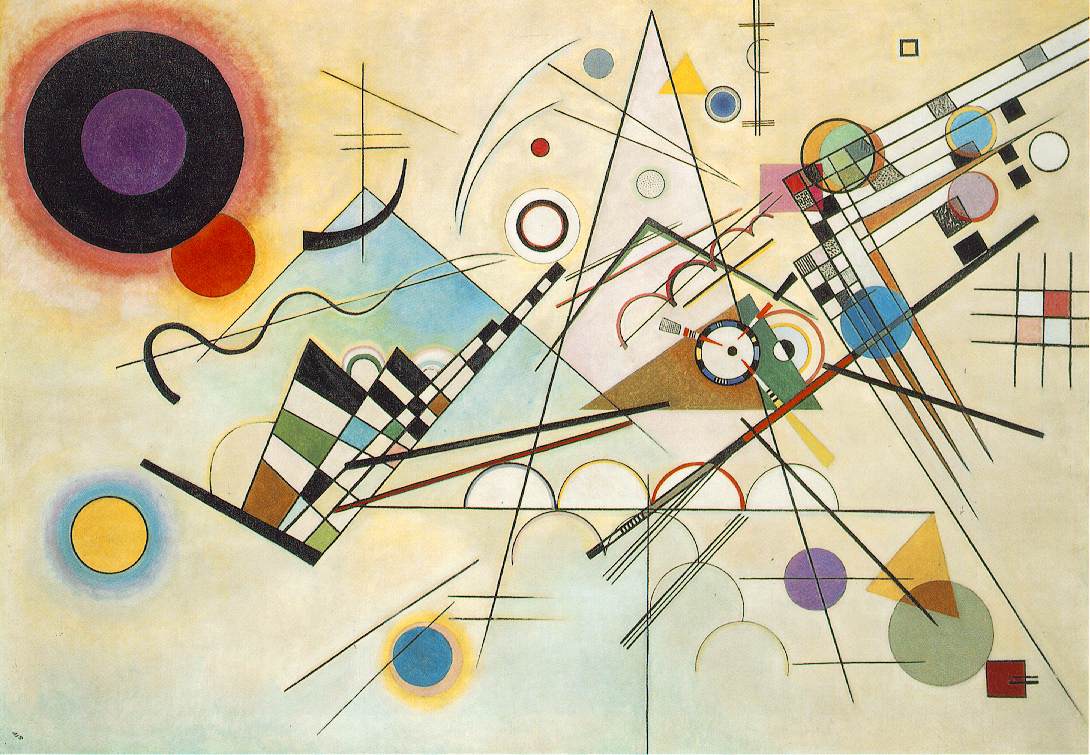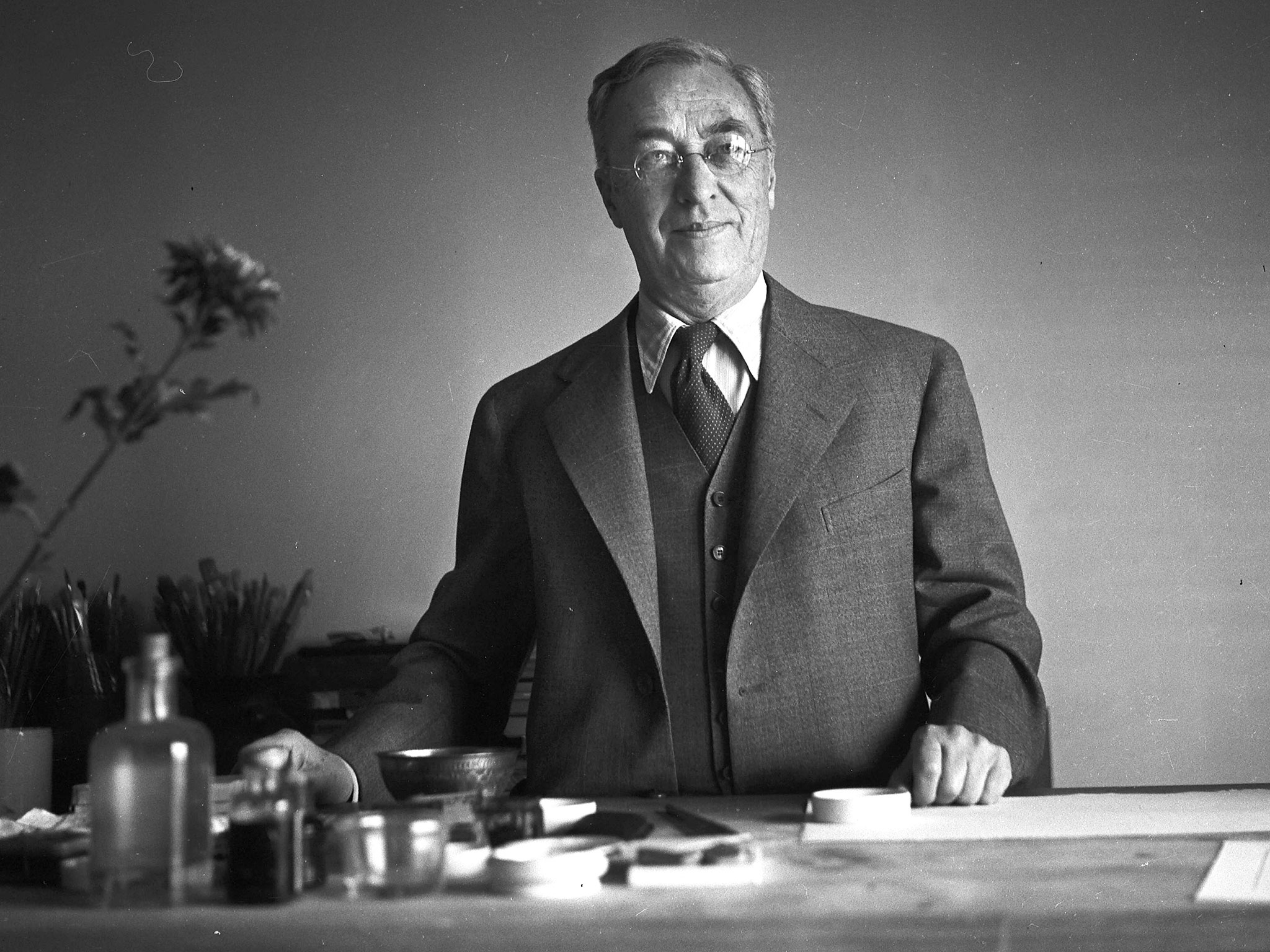Solomon and Irene Guggenheim went on a European tour in the spring of 1929. Introduced to Kandinsky at the artist’s studio in Dessau, Germany, Guggenheim purchased Composition VIII. Kandinsky regarded Composition VIII as the high point of his postwar achievement. In this work circles, triangles, and linear elements create a surface of interacting geometric forms. The importance of circles in this painting foreshadows the dominant role they would play in many subsequent works. Kandinsky evolved an abstract style that reflected the utopian artistic experiments of the Russian avant-garde. The emphasis on geometric forms, promoted by artists such as Kazimir Malevich, sought to establish a universal aesthetic language. Kandinsky’s work synthesized Russian avant-garde art with a lyrical abstraction that includes dynamic compositional elements, resembling mountains, sun, and atmosphere that still refer to the landscape. This conflict led him to return to Germany. In 1922 Kandinsky joined the faculty of the Bauhaus, where he discovered a more sympathetic environment. He taught there until 1933, when the Nazi government closed the Bauhaus and confiscated 57 of Kandinsky’s works in its purge of “degenerate art.”




Composition VIII
oil on canvas • 140 x 201 cm
 Wassily Kandinsky
Wassily Kandinsky